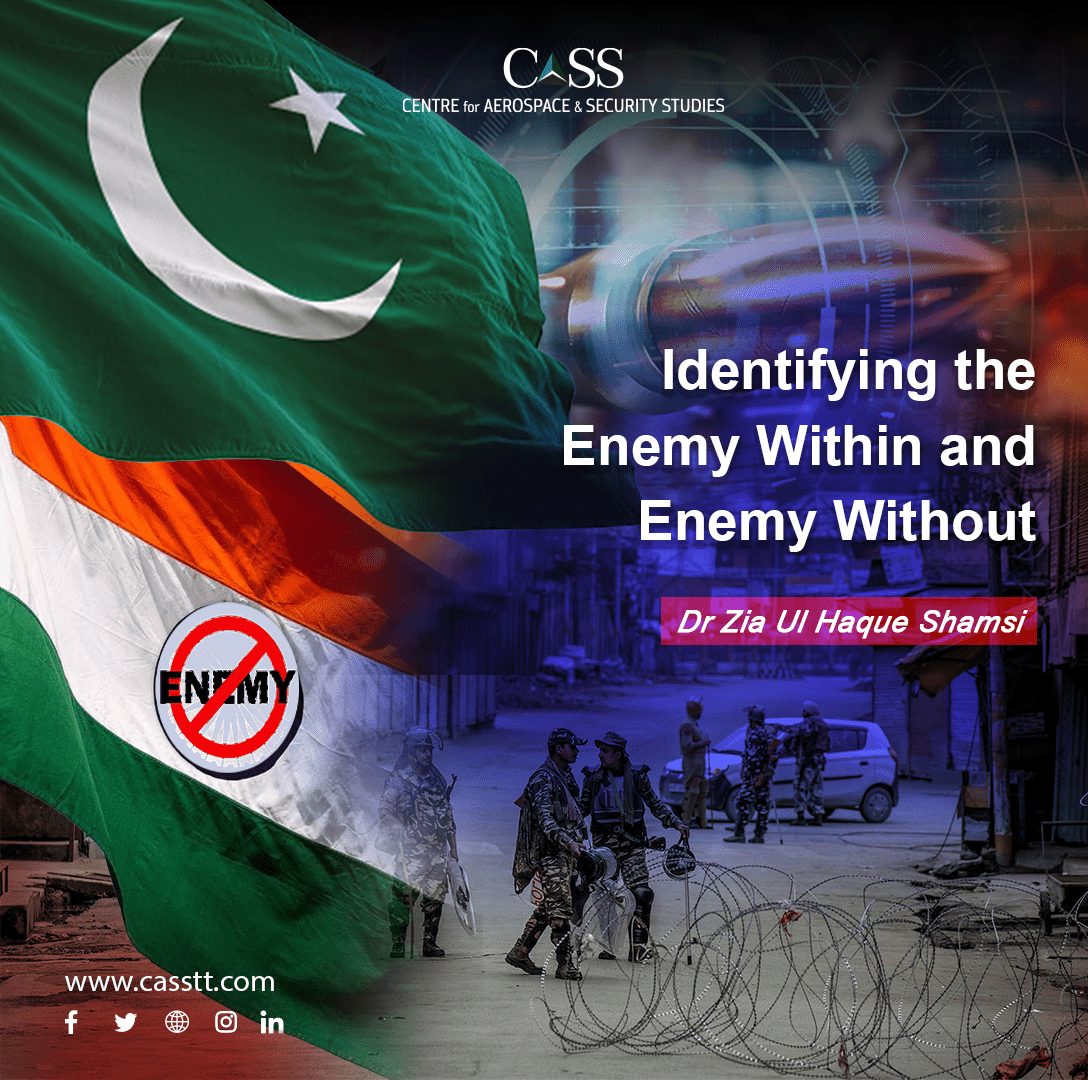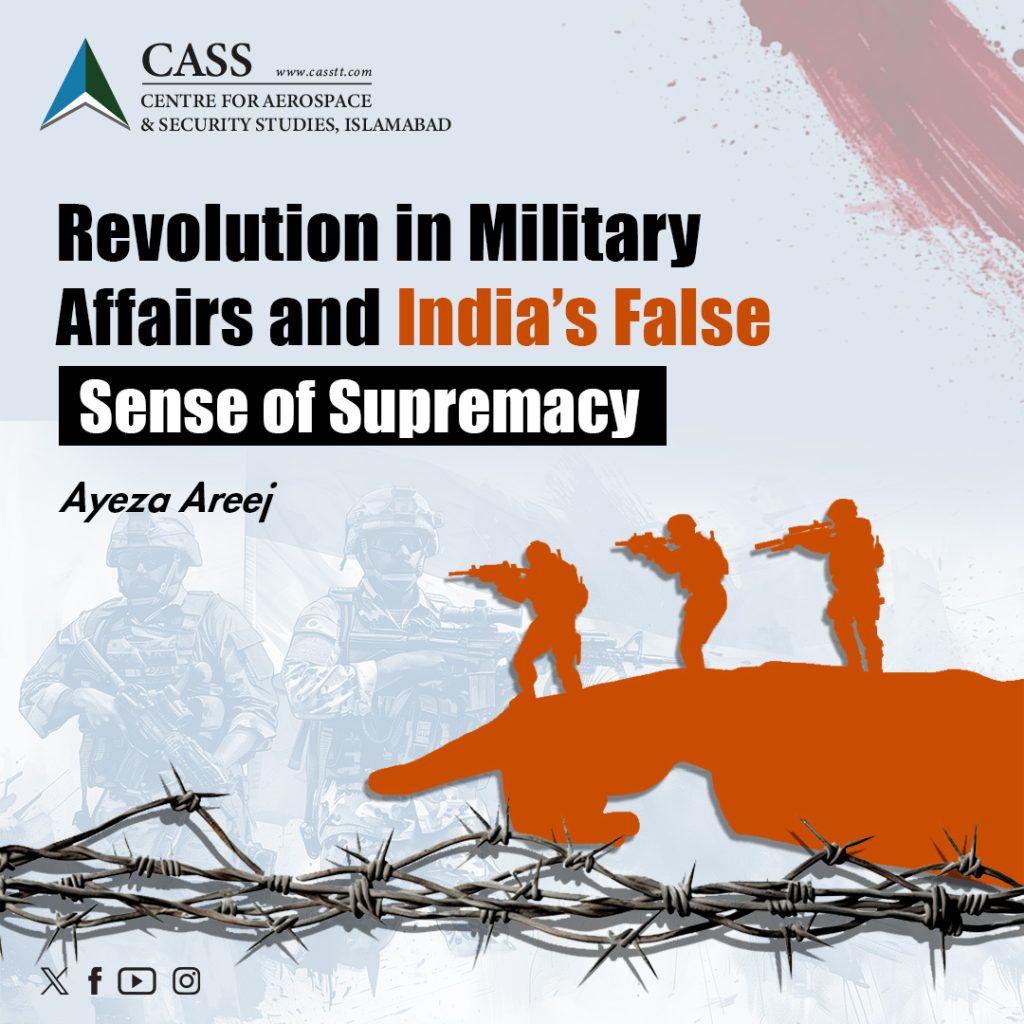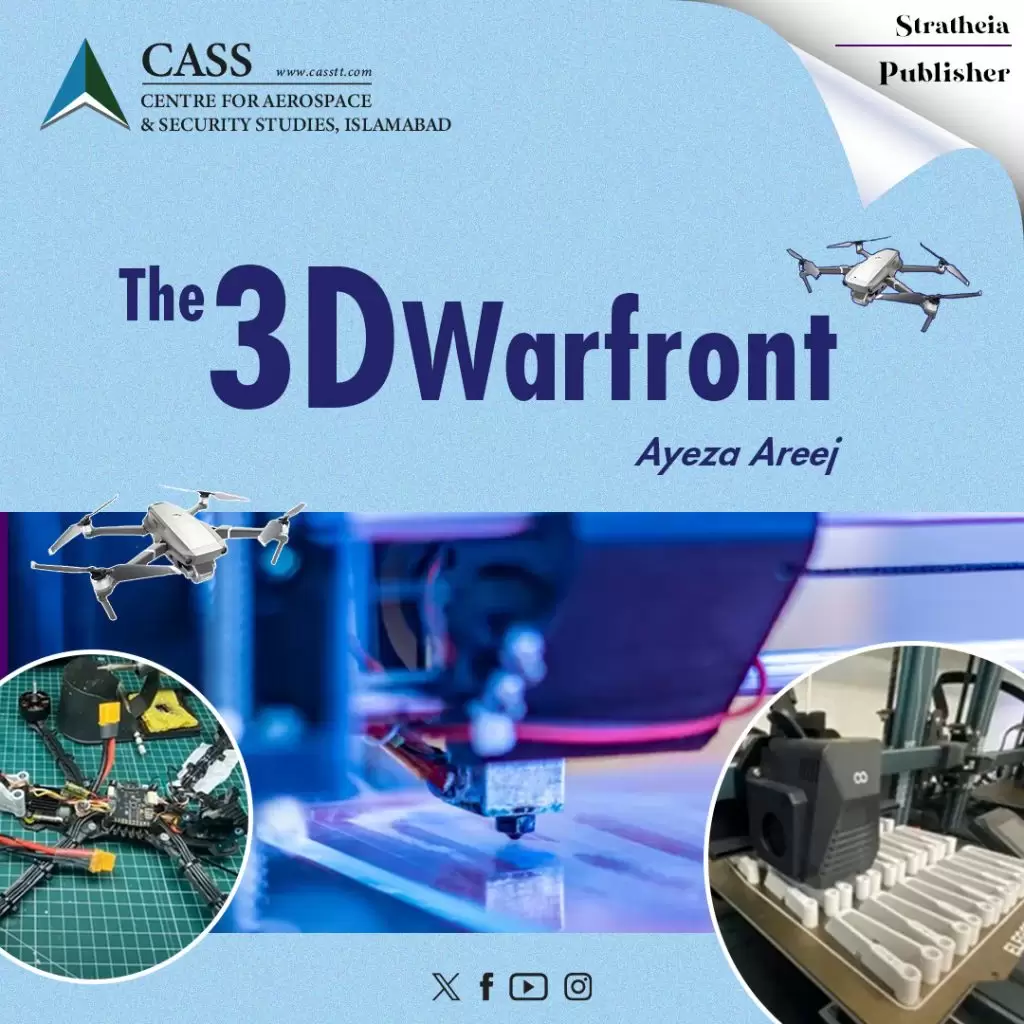Inspired by the dictum of great Quaid, the Founder of Pakistan, Muhammad Ali Jinnah about “Peace within and Peace without,” I am proposing a phrase “Enemy within and Enemy without,” particularly in the era of hybrid war or 5th Generation Warfare or Non-Kinetic Warfare, where the enemy remains invisible and unrecognisable. Moreover, the political environment has evolved in a manner that it becomes exceedingly difficult to distinguish the enemy.
Unfortunately, Quaid’s vision of peace within and peace without remains a dream for every Pakistani, perhaps because we failed to recognise the enemy within and the enemy without, properly. While the Armed Forces of Pakistan remained busy warding off the threat to the territorial integrity against traditional applications of force by the enemy, successive political governments have failed to correctly read enemy designs which were targeted towards the elements of non-traditional security through the employment of hybrid means.
Pakistan has had multiple wars, conflicts and crises with its arch-rival, India. The core issue of most wars and conflicts was Jammu and Kashmir (J&K), but the agenda items on the disputes have proliferated over the past seven decades. While J&K remains unresolved, Sir Creek, Siachen, water sharing, the Kargil conflict, Twin Peak crises, Mumbai attacks, and lately the February 2019 crisis, to mention a few, have been added to the long list of evolving disputes.
Moreover, Pakistan has been subjected to unending hybrid war by India to weaken the state from within. The reintroduction of the terminology of hybrid warfare gained ground since the Russian takeover of the Crimean Peninsula in March 2014, though the concept is as old as war itself. Andrew Mumford’s (2016) description of a hybrid adversary “as one that uses a combination of political, military, economic, social and intelligence methods of influence, as well as conventional, irregular, terrorist and criminal methods of warfare” appears fairly comprehensive and depicts an accurate picture of the South Asian environment. India has used, perhaps all of the abovementioned tools of hybrid force applications against Pakistan. The same has been verified by the European watchdog DisInfoLab in the “Indian Chronicles” report released in December 2020. The fifteen-year-long operations were aimed at major capitals in the European Union (EU) and the United Nations (UN) to serve Indian interests, and bring harm to China and Pakistan.
However, India could not have achieved its political objectives without active support from within the targeted areas. While few external agents were also sent as facilitators and the directors of executing sensitive operations, like Indian Navy’s serving officer Kulbhushan Jadhav, who was taken into custody from near the Iranian border on March 3, 2016. Jadhav is now in a Pakistani jail under a death sentence, while the Indian High Commission refuses to appoint a defence counsel for his case currently pending at the Islamabad High Court, following an order for a fair trial by the International Court of Justice (ICJ).
Likewise, a political crisis leading to socioeconomic instability cannot be triggered without active support from local elements. These may be Non-Governmental Organisations (NGOs), political offices of external elements, ingress through Joint Ventures (JVs), foreign-funded media houses, etc., as was evident from the “Indian Chronicles” report. At least 750 fake media and 550 website domains participated in the campaign directed mainly against China and Pakistan at the behest of Indian intelligence agencies.
Recently triggered political instability in Pakistan, which ultimately led to the economic downturn, is also attributed to externally-driven but locally-executed moves. What our enemies gained from the prevalent situation is skyrocketing inflation, a dissatisfied populace, falling currency, rising dependency on international donor agencies, and an extremely vulnerable society which has become polarised, volatile, and disenchanted with state institutions.
In fact, this is the most desirable situation for an adversary against a target state when its own people are restless and disillusioned. If an enemy’s purpose of inducing dissatisfaction among the masses is achieved, it has already won half the battle. Perhaps, the enemy has accomplished what Chinese sage Sun Tzu had professed more than 2500 years ago the best victory is one in which you win without fighting.
Therefore, it is extremely important to understand that we must identify the enemy within because the outside enemy is visible, whereas the enemy within remains invisible and causes more harm than the visible enemy, who can be tackled by the trained armed forces. Pakistan has the experience of tackling the ongoing hybrid war imposed on it by India, therefore, it is essential that more emphasis is placed on identifying the enemy within because the outside enemy cannot succeed in its political objectives without active support from elements located inside the target state.
Dr Zia Ul Haque Shamsi is the author of ‘Nuclear Deterrence and Conflict Management Between India and Pakistan’ and ‘South Asia Needs Hybrid Peace.’ He is presently working as Director (Peace and Conflict Studies) at the Centre for Aerospace & Security Studies (CASS), Islamabad, Pakistan. The article was first published in Daily Times. He can be reached at [email protected]





